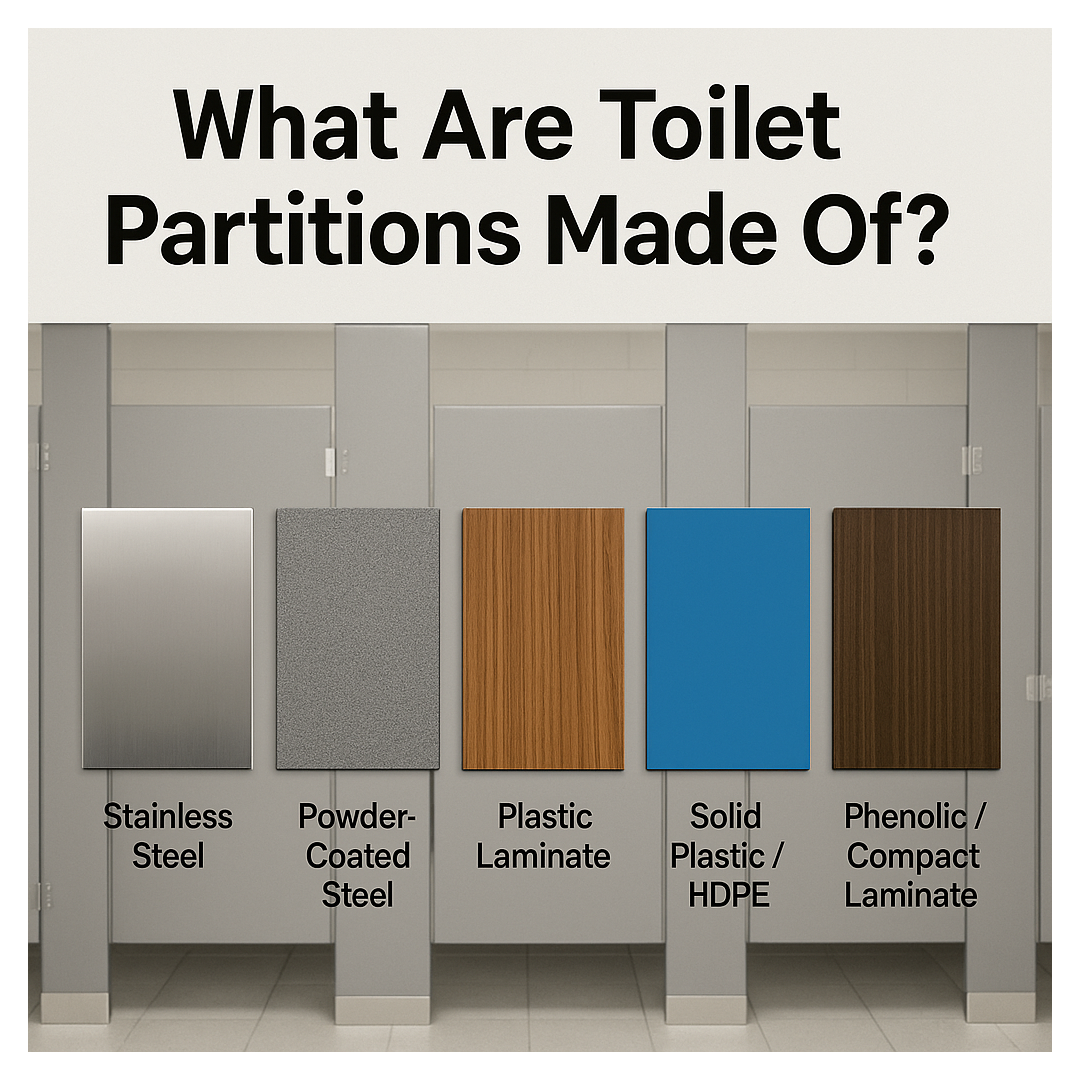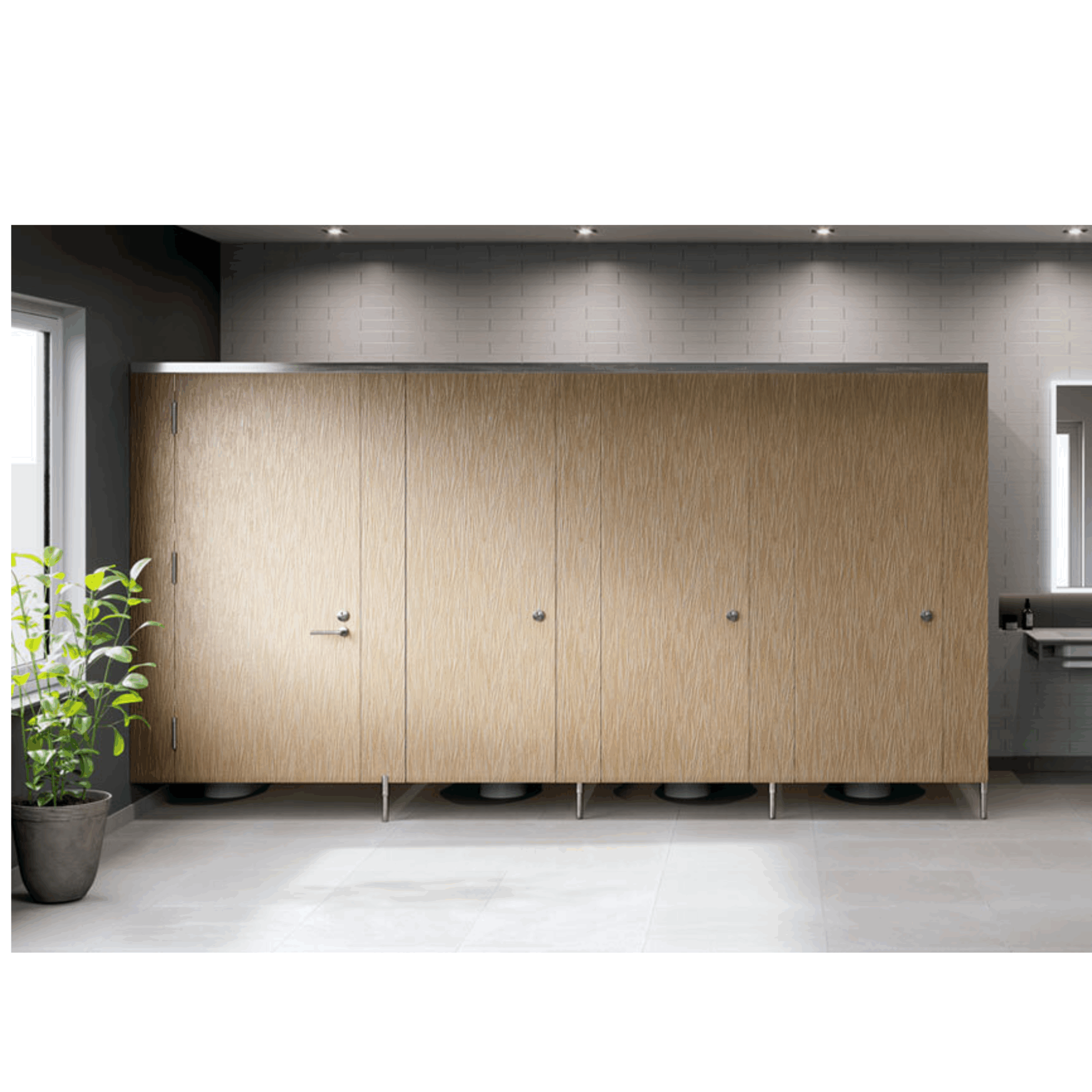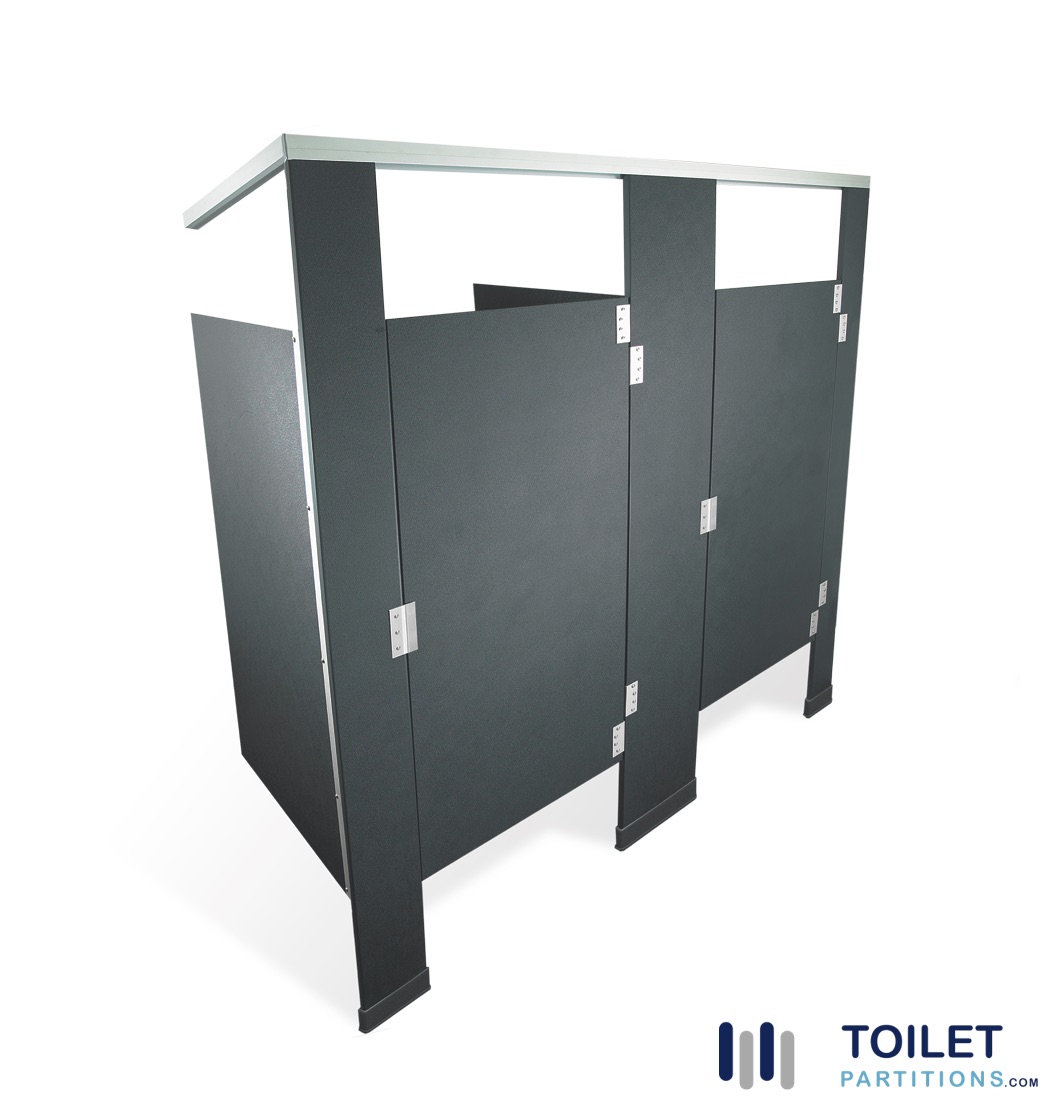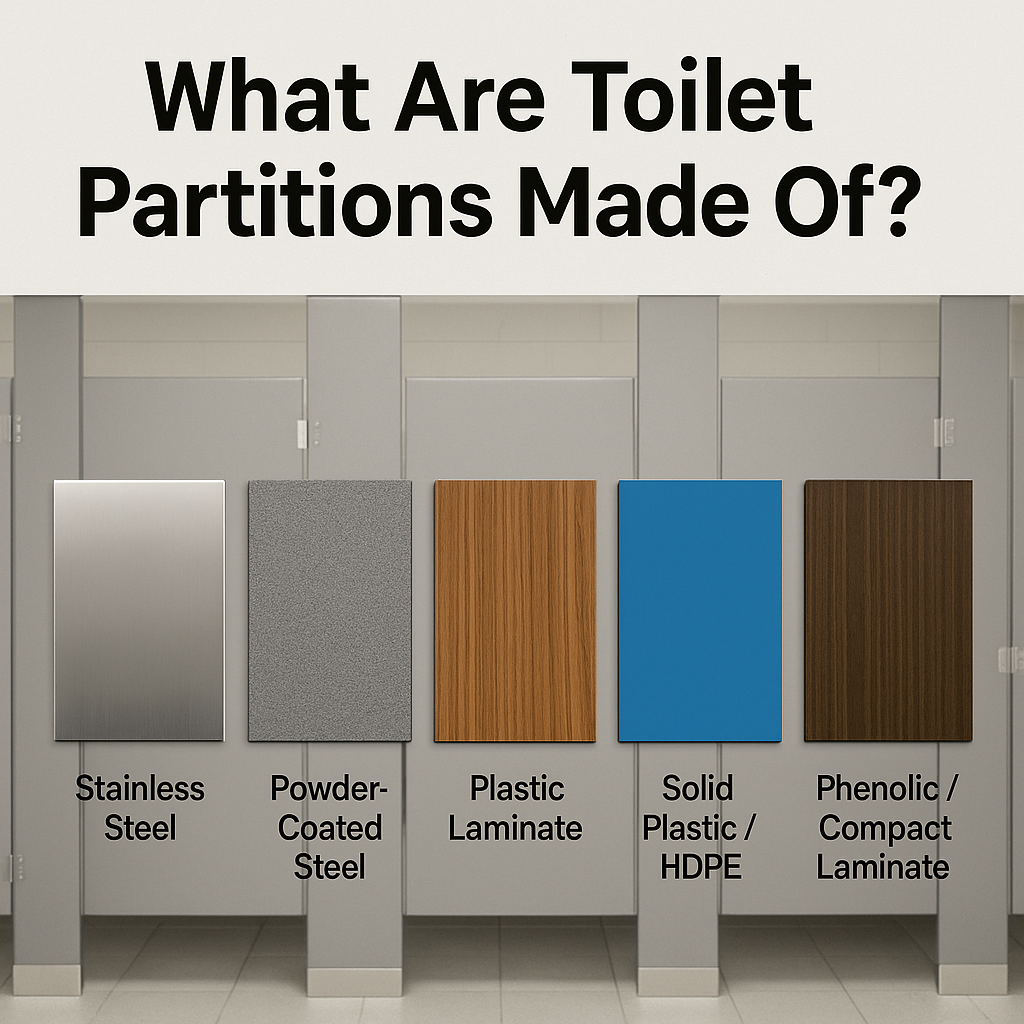Here at ToiletPartitions.com, we get asked just about every question you can think of about water closets, bathroom enclosures, toilet partitions, and bathroom stalls. We thought it would be fun to answer the top twenty frequently asked questions we get. If you have any questions that we haven’t answered, feel free to contact us. We have years of experience and are completely familiar with every type of partition there is.
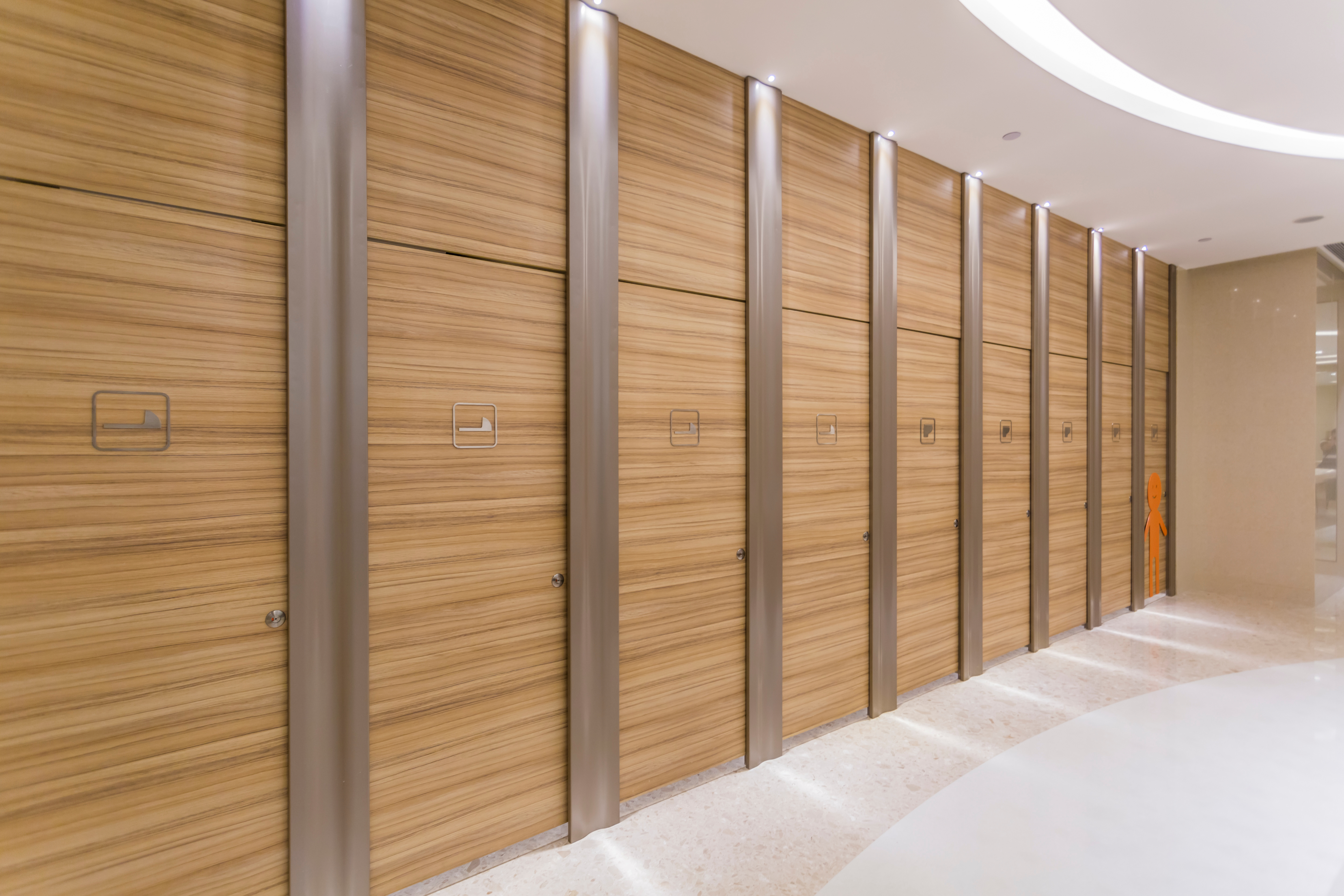
1. When were bathroom stalls invented?

Perhaps the most critical feature of a restroom toilet partition is its impermeability. Using waterproof materials in restrooms is vital in ensuring minimal maintenance. HDPE solid plastic partitions are non-absorbing, regardless of the environment. The high-density polyethylene material protects them from any damage caused by humidity and moisture. Even in 100% humidity environments, solid plastic toilet partitions will stay water-resistant.
2. Why are bathroom stall doors short?
Although there are many reasons, we think the top answer is — having doors that don’t stretch from floor to ceiling improves ventilation. Plus, when a water closet is completely enclosed, it’s more susceptible to mildew and mold.
3. Why are bathroom stall doors so high?
The height of bathroom stalls is designed specifically for privacy. In most cases, the doors are high enough to prevent eye contact with any other occupants in the main bathroom. Of course, there will be people who are taller than the average doors in the commercial restrooms.
4. Why are bathroom stalls so small?
In most cases, it comes down to affordability. With a smaller bathroom enclosure, you use fewer materials, so your cost is less. Smaller stalls also leave more space for sinks and walking in and out of the stalls and room.
5. Why do bathroom stalls not go to the floor?
This is a question we get a lot. With a gap under the doors and partitions separating the stalls, the floor is much easier to clean. Mopping is more efficient, and in some restrooms, especially for parks and outdoor facilities – there are drains in the floors so you can power wash the floor and let it drain or evaporate.
6. Why do bathroom stalls open inward?
Here’s the simple answer – it saves space. That’s especially important in crowded commercial restroom facilities. If the doors open outward, it will take up room. Plus, it would be a safety issue with people getting hit by the door. When the doors swing in, there is more room to walk and more room to stand at the sinks and use the mirrors in the main room.
7. Why do bathroom stalls have security screws?
You probably would be surprised at what would get stolen if it wasn’t secured down. And that includes bathroom partitions and bathroom doors. Whether the thief has a purpose in mind or its only vandalism, security screws keep your toilet partitions safe from theft.
8. Why are bathroom stalls not fully enclosed?

There are several reasons why. Here are the top ones. You can quickly peak to see if anyone is in the stall. That’s a better option than mistakenly walking into an occupied stall. Also, with a little less privacy – comes better security that shady activities won’t occur in the booth.
9. Why do bathroom stalls have gaps?
Like question 8 above, having a little less security where you can see through the door gaps, over or under doors, keeps things under control. Reduced privacy could also keep someone from spending more time in the stall than needed. Also, if someone were injured or required medical help – you’d be able to gain access easier.
10. How tall are bathroom stall doors?
The toilet partitions, doors, and panels we sell are 58’’ in height. That’s pretty standard. Our stalls made with solid plastic material are a bit shorter at 55” in height. Either of these sizes would be perfect for any commercial bathroom facility.
11. How thick are bathroom stall walls?
Our high-quality bathroom partitions come in five different materials. The thickness can range from ¾ inches to 1-¼ inch thick. That thickness ensures the stalls will be durable. Make sure when you measure your space to leave enough room for each bathroom door to swing fully open.
12. How many handicapped bathroom stalls are required?
Although your particular city may have different requirements, as of 2015, ADA guidelines required for every new construction or newly renovated bathroom with six or more stalls, one stall had to be at least three feet wide. Requirements can be complicated, so contact us with any questions.
13. What other requirements do ADA bathroom stalls have?
A corner stall needs to be at least 60” x 60”. Door size requirements are minimum 32” and maximum 36”. The compartment must be at least 60” deep. For most stalls, the doors swing out to give more space inside the stall.
14. How many bathroom stalls per person?
Here are the general rules from OSHA. These are based on the number of employees.
- 1 – 15 = 1 toilets per sex
- 16 to 35 = 2 toilets per sex
- 35 to 55 = 3 toilets per sex
- 56 to 80 = 4 toilets per sex
- 81 to 110 = 5 toilets per sex
- Over 150 = 1 additional toilet for every additional 40 employees
15. How tall are bathroom stalls?
It depends on the type of material you choose. The partitions made from Plastic Laminate, Phenolic, Powder Coat, and Stainless Steel material have panels and doors that are 58″ tall. Depending on the slope of your floor, the pilasters are between 82″ and 84-5/16. With Solid Plastic material, the panels and doors are 55″, and the pilasters range from 82″ to 84″ depending on the slope of the floor.
16. Can bathroom stall doors swing out?
In most cases, you wouldn’t want them to because then, the restroom would be non-compliant. When doors swing out, it’s hard for anyone in a wheelchair to close the door.
17. Can you paint metal bathroom stalls?
It can be done, but it takes a professional. We suggest taking them to an auto-body shop. Make sure they scuff them up, seal them really well with a high-quality epoxy sealer, then spray them with a durable automotive finish paint.
18. Can you paint commercial bathroom stalls?
If you don’t want to take the stalls to an auto body shop, you can try applying an epoxy-based product that was used to paint tubs and tiles. It’s hard to apply, but it does adhere.
19. Can you paint laminate bathroom stalls?
In most cases, you won’t have to because laminate walls are easy to wipe down. But this material is not simple to paint. There are several steps you can see here on how to paint these stalls successfully.
20. What are bathroom stalls made of?
There are five standard materials restroom stalls are made of. You can read our guide here. The materials are:
Stainless-Steel
Powder Coat
HPL High-Pressure Laminate
Compact Laminate/Phenolic
HDPE/Solid Plastic
Contact Toiletpartitions.com
We hope you’ve enjoyed getting all of your questions answered. If there’s something we missed, please reach out to us. From dimensions to ADA requirements, we have the information you need. The entire team at ToiletPartitions.com is here to help you and make sure that your order is correct and delivered on time. Whether you have one bathroom or 500, we’ll make sure you receive the highest in customer care and satisfaction. ,Call us today at 833-759-0176.





